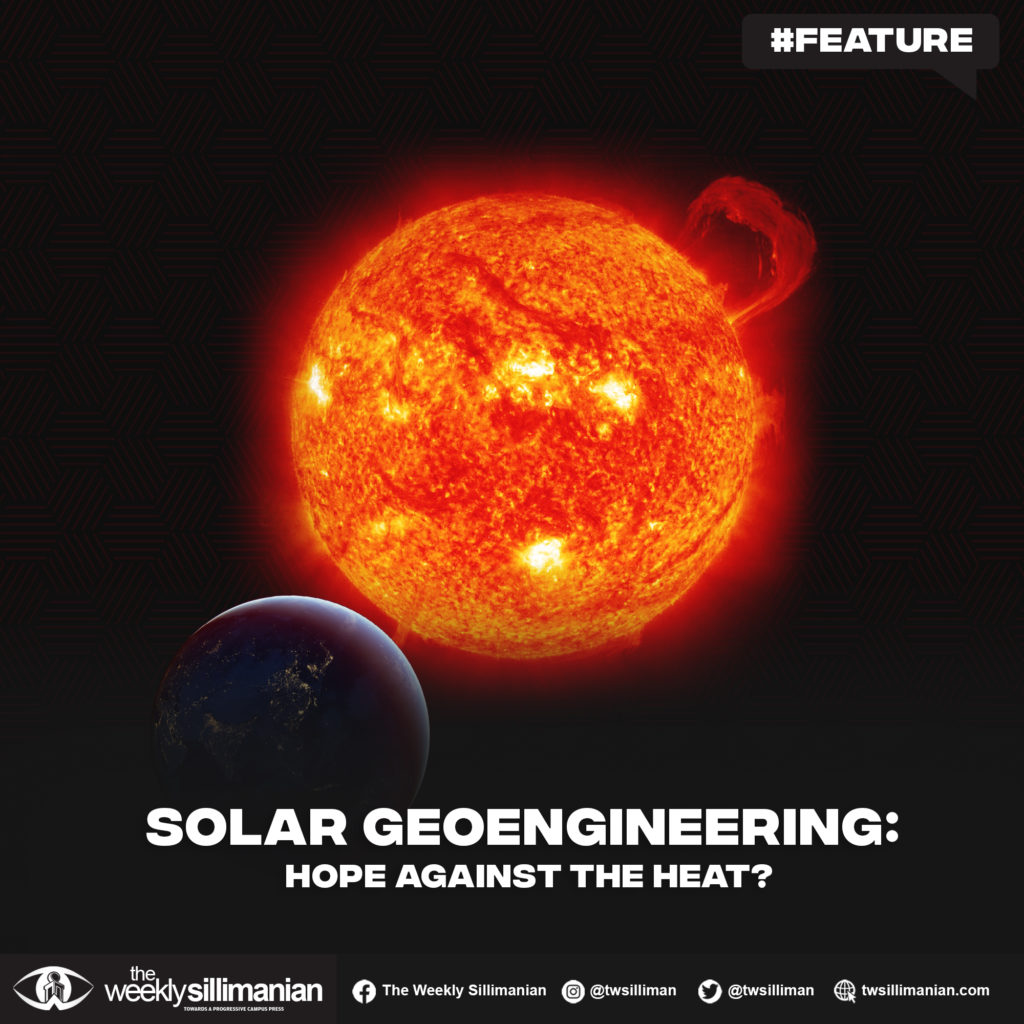by Ivan Anthony A. Adaro | November 9, 2021
Every year, on the 10th of November, World Science Day for Peace and Development is celebrated to highlight the significant role of the field in society and our daily lives. With climate change becoming a serious life-threatening menace to the lives of billions of people and the planet, it is of utmost significance to recognize the importance of science in building climate-ready communities to combat climate change – a major global issue society is facing today.

Through the years, science has played an important role in helping people understand the nature of climate change and how it affects the planet. It’s no secret that scientists love a good, old-fashioned argument. However, when it comes to climate change, numerous studies have confirmed that more than 90% of scientists agree that Earth is warming due to increased greenhouse gases, which human beings are the biggest contributors to. Still, the idea that solar geoengineering is an effective method to reduce climate change remains to be a controversial topic. Recent debates among scientists have been boiling as to whether or not it can save the planet from climate change, with some arguing that it is an effective strategy to alleviate the issue, while the rest beg to disagree and claim that it will further foster its long-term effects. The question is: what is true?
Solar geoengineering, also known as solar radiation modification, is a large-scale engineering approach to limit the amount of sunlight from entering the Earth to counteract the effects of greenhouse gas emissions. It acts like a shield or a protective barrier in the sky that reflects the sun’s rays into space, therefore limiting the amount of sunlight and heat from entering the Earth. Its goal is to increase surface albedo, which is the amount of sunlight reflected by the surface of the Earth to help neutralize its temperature. Think of it like a mirror and a flashlight, with the latter being the Earth’s surface and the former being the sun’s rays. If you flash light through a mirror, the light would deflect to you instead of passing through the mirror, thereby making it harder for the light to penetrate objects that lie on the other side of the mirror. This is how solar geoengineering works.
There are many forms of solar geoengineering, but the most effective proposed technique, according to the latest study of the Proceedings of the National Academy of Sciences (PNAS), is the Stratospheric Aerosol Intervention (SAI). This technique involves spraying large quantities of reflective materials, such as sulfate aerosols into the stratosphere. These particles would then reflect sunlight into space to cool the planet. Ultimately, the scientists of the same study agreed that it could induce one major benefit – lowering the Earth’s global temperature, describing it as a “scheme that is likely to have a large impact on Earth’s surface temperature”.
While this could offset the surface warming caused by increasing greenhouse gases and high temperatures, there are consequences as well that should be put into account. Despite SAI being the most effective technique, it is difficult and expensive to accomplish. Budget for the project ranges from $250 billion to nearly $2.5 trillion. This plan does not seem to be sustainable when suddenly stopped.. According to a 2018 study published in Ecology & Evolution, a sudden termination of solar geoengineering may result in ten times faster rapid increases of temperatures that could wreck ecosystems and destroy vegetation.
It is hard to draw a conclusion and quantify the potential risks of solar geoengineering because our current understanding of climate change is not sufficient enough to fully grasp the outcomes of such actions, neither how it would look in reality nor how it would affect the planet in the long run. These gaps in knowledge also make it hard for scientists to choose a stance on Solar Geoengineering. Will Solar Geoengineering truly save the planet and address climate change? We may not be so sure for now. However, science can answer that and fill the gaps of these uncertainties through extensive research, all in the quest for knowledge.
Science helps us understand everything that is happening around us. It plays an important role in building dynamic communities to better off everyone’s lives. Put science into action and use it to generate solutions in alleviating pressing issues and major problems society and the planet is facing.


